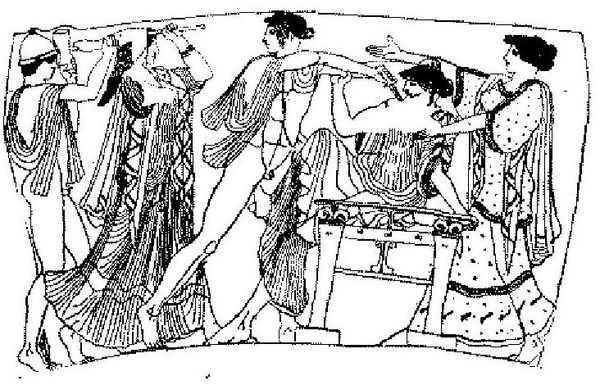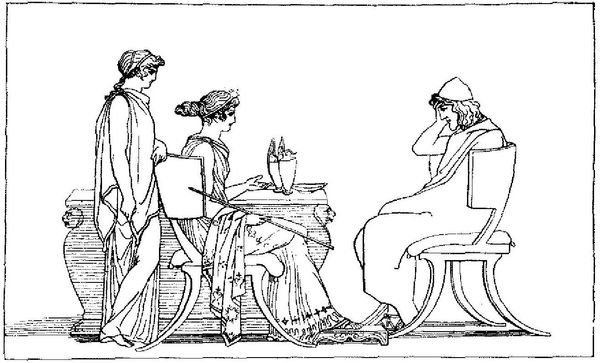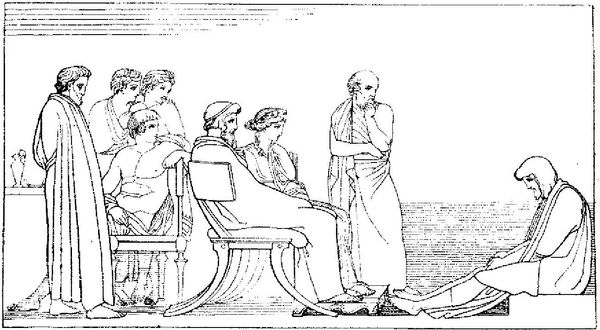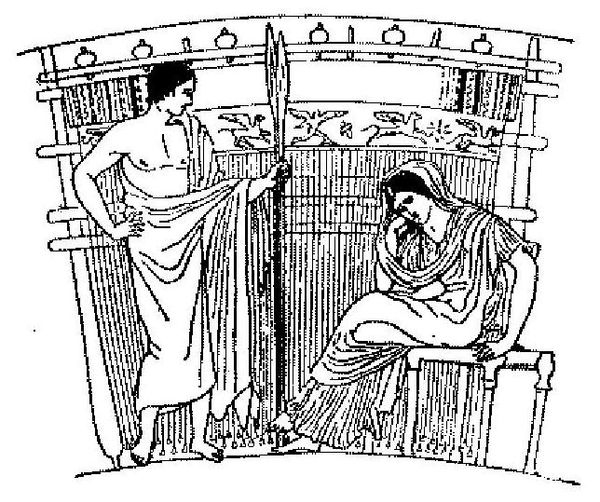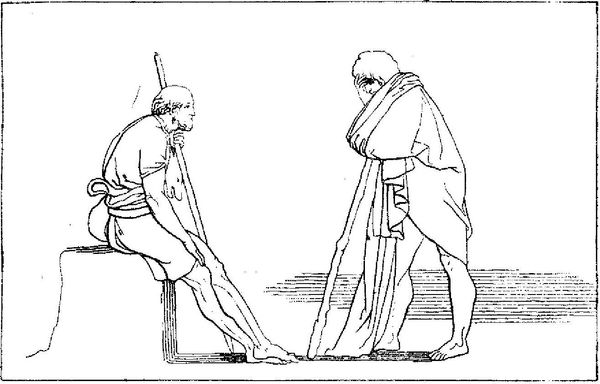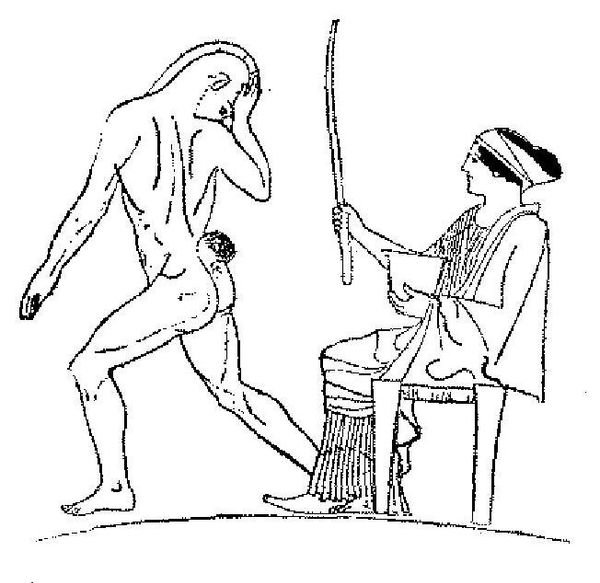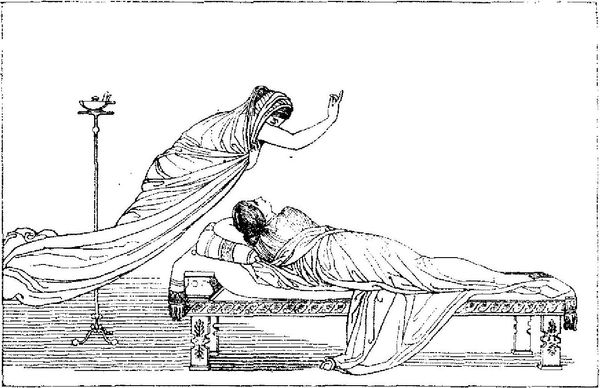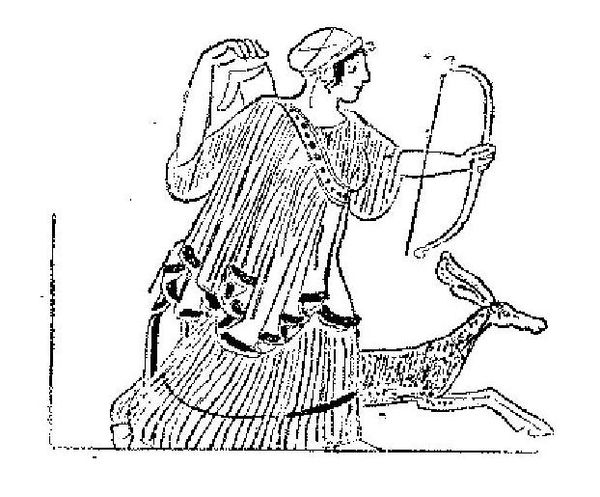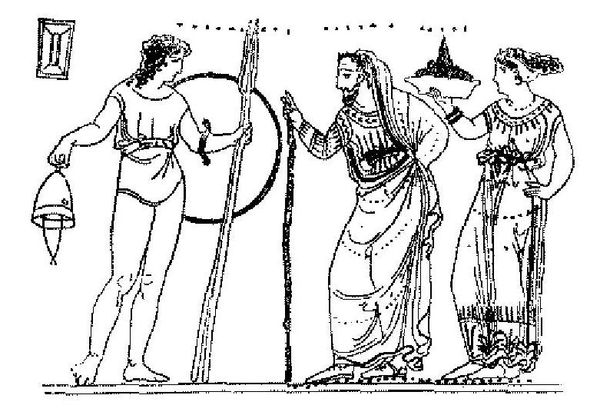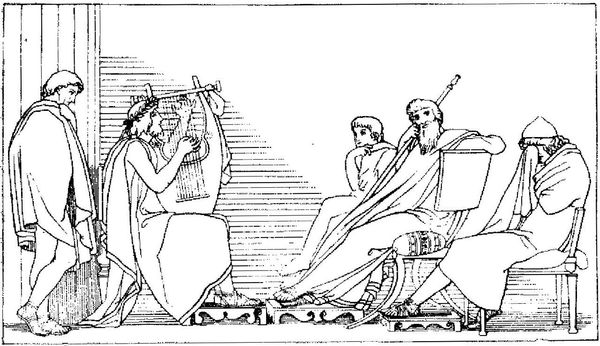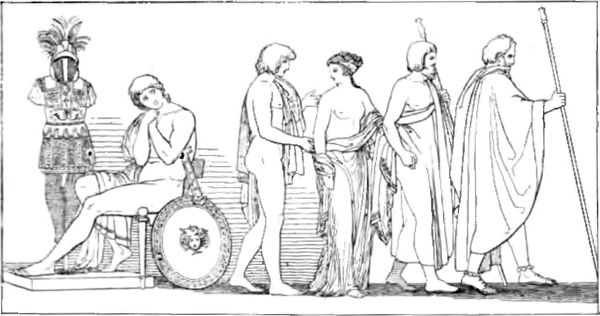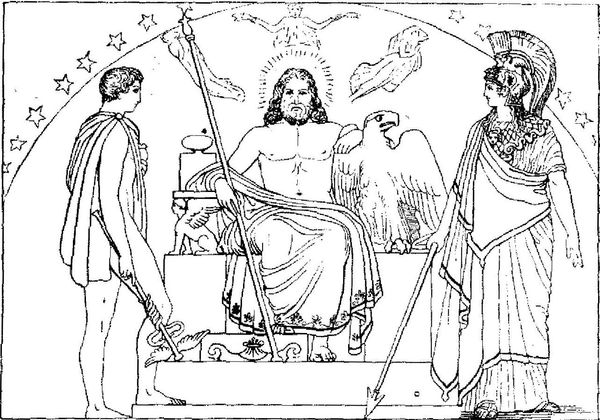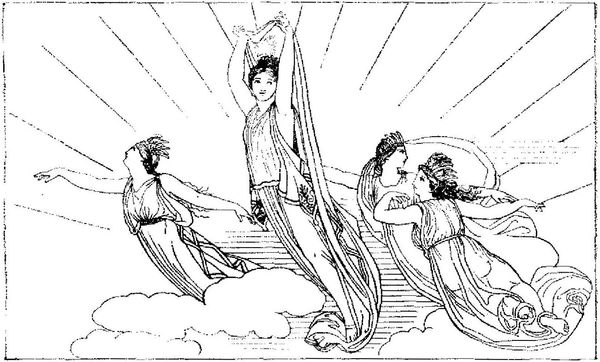
drawing, ink
#
drawing
#
line-art
#
narrative-art
#
figuration
#
line art
#
ink
#
ancient-mediterranean
#
line
Copyright: Public domain
Curator: Immediately, I am struck by the starkness, the raw linearity. It reminds me of illustrations etched directly into metal or wood. Editor: And indeed, this is "Illustration to Odyssey" by John Flaxman, rendered in ink in 1793. The choice of medium is quite purposeful. Ink, easily accessible, echoes the tradition of manuscript illustration and the broader reach of storytelling. Curator: The use of line is particularly striking. It's almost aggressively minimalist, paring down form to its most essential contours. We see line operating as both contour and value. How do you read the stark compositions and their emotional charge? Editor: Well, considering its purpose, this series of drawings were made so that William Hayley could make engravings after them, thus producing numerous inexpensive and portable copies for people to read at home, as well as being aimed at a wider audience including women and children who wouldn't normally be in contact with artwork like this, I think. There's a democratization inherent in this project. And you see the bareness of this drawing, the reduction of materials necessary to do it, suggests this simplicity, this necessity to transmit Homer's story without all of the traditional Baroque artifice, makes this really profound. The ink, affordable and versatile, is critical to Flaxman's vision and also helps give a sort of "classical" feel to it too. Curator: Absolutely. This visual paring-down focuses the viewer's attention precisely where Flaxman intends—on gesture, composition, and narrative clarity. Think of how the seated figure’s outstretched hand becomes a focal point, framed by the negative space. It creates a clear semiotic relationship with classical prototypes, as well. Editor: It suggests labor, also, and this isn't some oil painting made by artisans in the academy that is so prominent in Europe in the 1790's. Rather, this simple medium used and mass-reproduced brings art to wider swaths of the population who wouldn't have otherwise been in contact with fine arts. Curator: Yes. Thank you. Editor: Thanks for sharing your expertise.
Comments
No comments
Be the first to comment and join the conversation on the ultimate creative platform.
